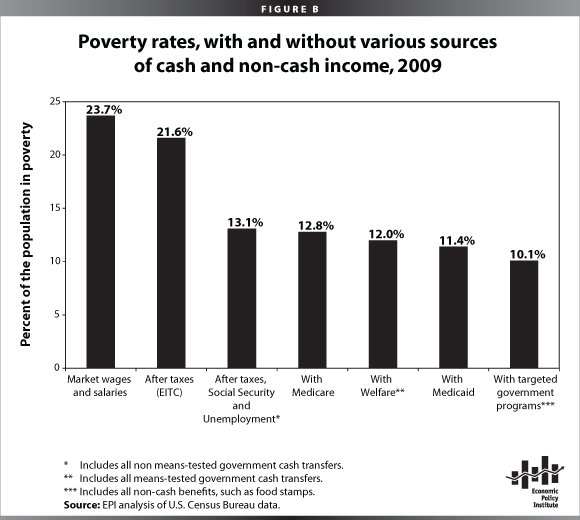You may have noticed the recent spate of articles on the Census Bureau’s decision to replace the old “poverty line” with a spate of different alternative measures of poverty, in hopes of eventually settling on one that makes sense. I’ve written before about why this is a good thing to do — more interesting at the moment is the Economic Policy Institute’s take on what the new numbers mean.
What EPI has done is sliced and diced the poverty figures to show how the poverty rate changes as you account for various government programs. (The official poverty line counts welfare and other cash transfers as income, but not food stamps or the earned income tax credit, which is one reason why people want a new poverty measure.) The upshot of their analysis: “Social Security is the most important anti-poverty program in the United States.” To wit:

There are other interesting takeaways from this chart, not least of which is that without government programs, nearly one American in four would be living in poverty; and that, even if you count government-supplied medical care as cash income, still more than one American in ten counts as poor. But “Social Security is the most important anti-poverty program in the United States” is a pretty good start — especially given some of the rumors floating around.